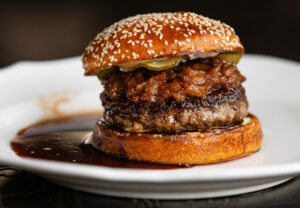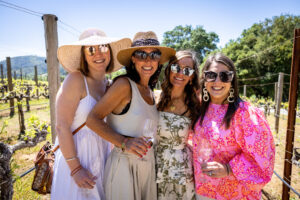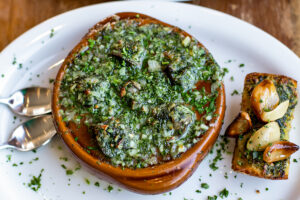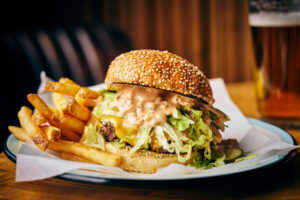Unless you’re an aficionado, the wine aisle can be a daunting place. Columns of glass soldiers stand silently, unflinching as Buckingham Palace guards and without so much as a wink that says, “Pick me.” With hundreds, and sometimes thousands, of wines on store shelves, it’s no wonder some would-be buyers run for cover.
Marketing minds say that getting a customer to pick up a wine bottle is half the battle; once it’s touched, the chance of that bottle going into the shopping cart is high. How the bottle looks is just as important as the taste of the drink inside (there are very few “bad” wines these days), so wineries seek to create eye-catching labels and vessel shapes to impress younger wine drinkers, and the young at heart, who are unexcited by Chateau This and Domaine That. If it looks cool, it’s cool to drink.
Healdsburg’s Truett-Hurst Wines is at the forefront of producing wines with quirky, cutting-edge, evocative packaging. While most of the company’s 30 brands come in traditional glass bottles with paper labels, it has a division devoted to finding avant-garde ways to present wines in chain stores such as Safeway and Total Wine.
Two years ago, Truett-Hurst launched a series of 10 wines at Safeway stores, each variety wrapped in wildly illustrated paper that tells a story about the wine, includes a recipe, or makes suggestions for what to serve with the wine. The wrap for Schucks White Wine, for example, has fish swimming around the bottle, suggesting that it goes with seafood.
Then came California Square wines in, yes, square-sided glass bottles reminiscent of old-time spirits and hair tonic. Ever so tongue in cheek, Truett-Hurst marketers claim that the California Square bottle is not only recyclable, it’s reusable (and thus green), and suggest using it as a vase, water carafe or olive oil container once the bottle is empty. California Square Chardonnay, Cabernet Sauvignon and a red blend ($20), appear to target the wine drinker furnishing his or her first apartment.
Late 2013 saw Truett-Hurst’s delivery of Paper Boy, which it says is the world’s first paper wine bottle. It has a recycled cardboard shell in the shape of a wine bottle, with a plastic bladder inside holding the wine (Mendocino County Chardonnay and Paso Robles red blend, each $15). At 1.5 pounds for a 750-ml “bottle,” Paper Boy is significantly lighter than a standard glass bottle (3 to 4 pounds) and is 67 percent more efficient in its production carbon footprint. All of its parts are recyclable.
Green is good, of course, and the unbreakable bottle makes Paper Boy easy to put in a backpack or tote to the beach or tailgate party. The same is true for Flasq Wine in St. Helena, which fills sleek 375-ml, brushed-aluminum cans with Chardonnay and Merlot made from California grapes. Each Flasq ($5 to $6), which holds two glasses of wine, is shatterproof, chills wine five times faster than glass, reduces carbon footprint 35 percent due to its light weight, and has the sporty look one would be proud to display on the golf course, after a hike or out on the ocean. Think of it as wine in beer clothing.
When it comes to taste, these wines won’t bowl over the critics, yet they’re well-made, easy to drink and fairly priced. They don’t just wink. They shout, “Pick me!”










